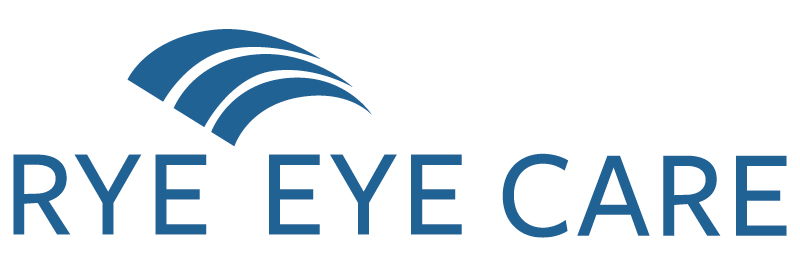Experience Visual Freedom with Expert LASIK Surgery
Ready to let go of your corrective eyewear? LASIK may be your answer to visual freedom. Request an appointment with Rye Eye Care and let us help you manage your LASIK journey.

What is LASIK and Why Should You Consider It?
LASIK — Laser-Assisted In Situ Keratomileusis — is a popular and proven refractive surgery that can correct common vision problems, reducing or even eliminating the need for glasses or contact lenses. This surgical procedure is designed to reshape the cornea, the clear front surface of the eye, allowing light to focus on the retina for clear vision properly.
LASIK is primarily used to address the following vision issues:
- Myopia (Nearsightedness): LASIK can effectively reduce the elongation of the eyeball, correcting the blurred distance vision characteristic of myopia.
- Hyperopia (Farsightedness): By reshaping the cornea to increase its curvature, LASIK can enhance the eye's ability to focus on nearby objects, addressing hyperopia.
- Astigmatism: Irregular corneal shape causing distorted vision can be corrected through LASIK, restoring clear and sharp vision.
- Presbyopia: While LASIK is not a cure for presbyopia, some advanced techniques can create a multifocal cornea, offering improved near and distance vision without reading glasses.
The recovery period after LASIK surgery is quick, with minimal discomfort, making it a preferred choice for those seeking visual freedom. However, not everyone is an ideal candidate for LASIK, and this is where LASIK and refractive surgery co-management come into play.
At Rye Eye Care, we provide expert LASIK and refractive surgery co-management services. Our experienced optometrists work closely with reputable LASIK surgeons to evaluate your candidacy for the procedure, ensuring you receive the most suitable and effective vision correction option tailored to your unique needs.

What is Wavefront LASIK?
Wavefront LASIK — wavefront-assisted, wavefront-guided, or custom LASIK — uses laser treatment (ablation) mapped by computerized analysis. Wavefront-guided procedures are much more precise than ablations determined using standard eyeglasses prescriptions. They can correct subtle optical imperfections of the eye called “higher-order aberrations” that regular ablations cannot treat. Studies prove wavefront-guided ablations provide sharper vision than conventional, non-wavefront LASIK and can improve night vision, eliminating or reducing the risk of halos or glare.
Am I a LASIK Candidate?
The decision to undergo LASIK, a life-changing vision correction procedure, should be made carefully considering various factors. Here's what you need to know:
Ideal Candidates: LASIK is typically suitable for individuals aged 18 and older with healthy eyes and adequate corneal thickness. This is crucial because LASIK involves reshaping the cornea by removing tissue.
Exclusion Factors: Chronic dry eye, corneal disease, or other eye abnormalities may disqualify a candidate from LASIK surgery. A comprehensive eye exam is essential to determine eligibility. We offer LASIK pre-operative exams and consultations at our office for your convenience.
At Rye Eye Care, we are committed to guiding you through the LASIK decision-making process. Our LASIK pre-operative exams and consultations ensure you have the information and support needed to make an informed choice about this life-changing procedure. Your vision and comfort are our top priorities, and we're here to help you every step of the way.

How Does LASIK Work?
LASIK is a streamlined outpatient process designed for your convenience. Here's what you can expect during this transformative journey:
Efficiency: The LASIK procedure is remarkably swift, typically lasting around 15 minutes for both eyes. However, we recommend allowing some extra time at the surgery location to ensure a comfortable experience.
Step 1: Creating the Flap: Your LASIK surgeon initiates the procedure by gently crafting a thin, hinged flap of tissue on your cornea. This critical step is performed with the precision of a microkeratome or advanced laser technology. The flap is delicately folded back, granting access for the laser reshaping to commence.
Step 2: Laser Reshaping: Laser treatment takes a minute or less to reshape your cornea and correct your vision. This precise and efficient process ensures minimal discomfort.
Flap Repositioning: After the laser treatment is completed for one eye, the flap is carefully repositioned. Your surgeon then proceeds to enhance the vision in your other eye.
We partner with excellent ophthalmologists who perform this surgery. Rest assured that you'll be in capable hands throughout this journey, and we're here to address any questions or concerns you may have along the way.
What To Expect After LASIK Surgery
Following your LASIK procedure, you'll briefly use medicated eye drops and protective shields. While you can open your eyes and see without glasses immediately, driving on the day of surgery is not advised.
Medicated eye drops are crucial to your post-operative care, preventing infection and aiding healing for about a week. Artificial tears may also be recommended for added comfort.
On surgery day, rest your eyes as much as possible, and dim the lights at home for comfort. The day after LASIK, your vision should improve, allowing you to drive and resume daily activities cautiously.
A follow-up eye exam is scheduled for the day after surgery to monitor your progress and address questions. In some cases, post-operative care may be co-managed with your surgeon.
Stabilizing your vision may take a few months; consult your LASIK surgeon if it remains blurry. Eyewear may still be beneficial in certain situations.
Remember to continue routine eye exams, ensuring ongoing eye health. We prioritize your well-being at Rye Eye Care and are ready to support you throughout your LASIK journey.
